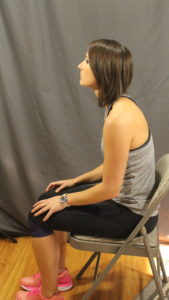Texans - Accepting Insurance! Click HERE!
Osteoporosis of the Spine
The top three fracture sites for people with osteoporosis are the wrist, hip and SPINE.
Avoiding spinal flexion and rotation is important in protecting the spine. You can read more about this in the article, Movements to Avoid To Protect Your Spine.
In this article, I want to discuss each region of the spine. I will give you an overview of how to protect it against fractures with good posture and postural strengthening.
Your spine consists of of three regions: the Lumber Spine, the Thoracic Spine and the Cervical Spine.
So let’s begin!
Lumbar Spine (Low Back)
To better protect the lumbar spine, it is important to have good posture.
To have good posture it is crucial to strengthen the core, specifically the transverse abdominis.
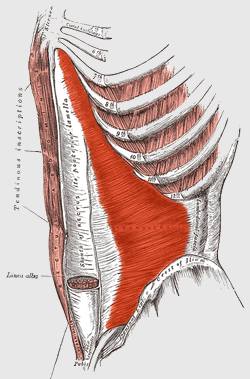
Transverse Abdominis
The transverse abdominis is an amazing protector of the spine. It should be strengthened and activated during all activities.
The transverse abdominis attaches to the abdominals in the front and the lumbar fascia in the back.
This muscle pulls inward when activated and acts like a girdle. This increases spinal stability during daily activities and exercise. When the spine is more stable, there is less chance of injury.
Spinal stability also helps maintain good spinal alignment which improves posture.
With osteoporosis, the type of fracture experienced most often in the spine is a compression fracture. When the transverse abdominis is strong and activated, vertical pressure decreases. This muscle helps support the load through the lumbar spine.
With decreased vertical load and improved posture, the risk of fracture decreases. REDUCING FRACTURE RISK IS KEY!!
The problem is that most people do not know how to activate this core muscle.
Check out this article and video on how to activate your core muscles.
Once a person is able to activate the transverse abdominis, a habit can be formed. Once activating the muscle becomes habit, the spine will be better protected during daily activities, chores and exercises. With a little training and education THIS CAN EASILY BE DONE!!
Join now to get my free exercise checklist with the best exercises to help you fight osteoporosis!
FREE PDF CHECKLIST

Thoracic Spine (Upper Back)
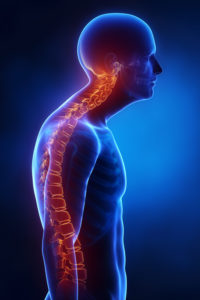
The thoracic spine is the part of your spine between your neck and your low back.
A slumped posture with increased kyphosis (humped back posture) in the thoracic spine can occur with osteoporosis.
This posture occurs as the vertebrae in the thoracic spine, lose bone mass and experience compression fractures.
Compression fractures in the thoracic spine occur in the front part of the vertebral body. This decreases the vertebral body height.
The decrease in height in the front of the vertebrae causes an increased curvature or hump in the spine.
To prevent a slumped posture, increase bone density and maintain proper posture. Bone density and posture improve with exercises to strengthen the upper back muscles.
Exercises should strengthen the latisimus dorsi, the rhomboids and the trapezius muscles.
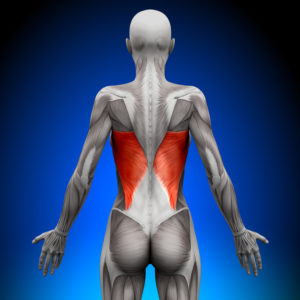
Latisimus Dorsi
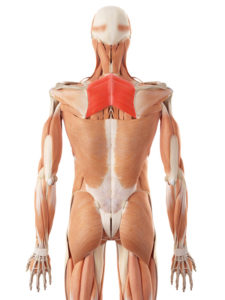
Rhomboids
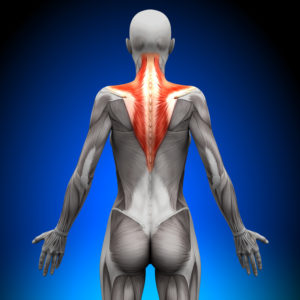 Trapezius
Trapezius
Also, stretching the chest muscles helps with postural alignment.
See my article and video on stretching.
Cervical Spine (Neck)
Posture is key in protecting the cervical spine.
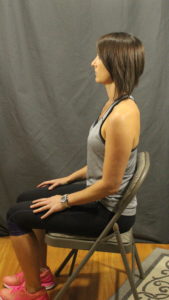
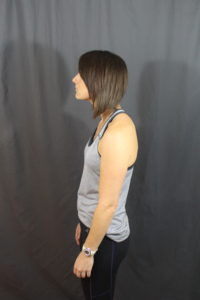

Core should be activated while sitting and standing.
Avoid sitting at computers for extended periods of time or looking down for too long. These activities can cause misalignment and tightness in the cervical spine. When sitting at a computer, driving or watching television, maintain good posture in all parts of your spine.
See my article on proper sitting and standing posture.
Generally, with proper strengthening and alignment of the lumbar and thoracic spine, and with exercises to increase bone density, the cervical spine can be properly aligned.
Let’s Review
When you have osteoporosis, protecting your spine from compression fractures is vital to maintaining your quality of life,  avoiding pain, and having good posture.
avoiding pain, and having good posture.
Along with nutrition, hormone replacement therapy, and appropriate resistance and weight bearing exercises, learning to maintain good posture and activate your core during all activities will help you better protect your spine.
FREE STARTER COURSE HERE!
Learn MORE!
Osteoporosis and Weight Bearing Exercises
Movements to Avoid When You Have Osteoporosis
Home Modifications to Prevent Fractures from Falls

